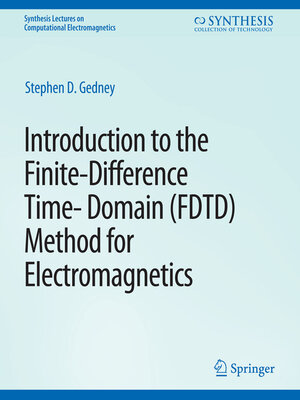Introduction to the Finite-Difference Time-Domain (FDTD) Method for Electromagnetics
ebook ∣ Synthesis Lectures on Computational Electromagnetics
By Stephen Gedney

Sign up to save your library
With an OverDrive account, you can save your favorite libraries for at-a-glance information about availability. Find out more about OverDrive accounts.
Find this title in Libby, the library reading app by OverDrive.



Search for a digital library with this title
Title found at these libraries:
| Loading... |
Introduction to the Finite-Difference Time-Domain (FDTD) Method for Electromagnetics provides a comprehensive tutorial of the most widely used method for solving Maxwell's equations — the Finite Difference Time-Domain Method. This book is an essential guide for students, researchers, and professional engineers who want to gain a fundamental knowledge of the FDTD method. It can accompany an undergraduate or entry-level graduate course or be used for self-study. The book provides all the background required to either research or apply the FDTD method for the solution of Maxwell's equations to practical problems in engineering and science. Introduction to the Finite-Difference Time-Domain (FDTD) Method for Electromagnetics guides the reader through the foundational theory of the FDTD method starting with the one-dimensional transmission-line problem and then progressing to the solution of Maxwell's equations in three dimensions. It also provides step by step guides to modeling physical sources, lumped-circuit components, absorbing boundary conditions, perfectly matched layer absorbers, and sub-cell structures. Post processing methods such as network parameter extraction and far-field transformations are also detailed. Efficient implementations of the FDTD method in a high level language are also provided. Table of Contents: Introduction / 1D FDTD Modeling of the Transmission Line Equations / Yee Algorithm for Maxwell's Equations / Source Excitations / Absorbing Boundary Conditions / The Perfectly Matched Layer (PML) Absorbing Medium / Subcell Modeling / Post Processing






